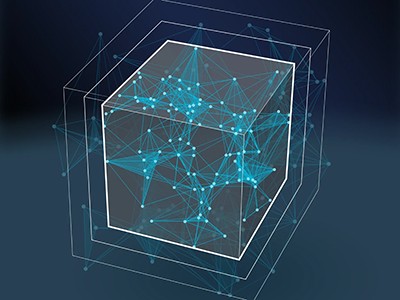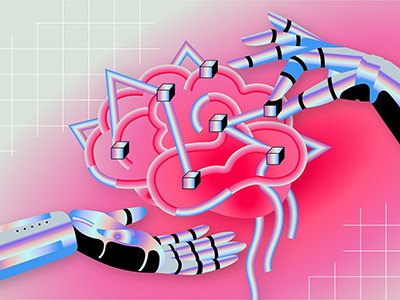When I began the Artificial Inventor Project in 2017, there were essentially no laws on inventions generated using artificial intelligence (AI) for drug discovery and repurposing, for example. But biomedical companies and researchers were already concerned about how patent law would handle such innovations.
The project was meant to promote dialogue and provide guidance. I manage a team of attorneys working pro bono to file patent applications in 18 jurisdictions worldwide for two inventions generated by US researcher Stephen Thaler’s AI system DABUS. Thaler is the owner on the patent applications on which DABUS is listed as inventor. In the cases heard so far, the results have been a mixed bag.
In March, I presented arguments to the UK Supreme Court in a case that will decide whether AI-generated inventions are patentable under UK law. I was also the lead attorney in a US case in which the applications were denied. The US Supreme Court turned down our appeal in April, making the country one of a handful that prohibits patents on AI-produced inventions.

Rules to keep AI in check: nations carve different paths for tech regulation
This outcome could seriously hamper innovation in biomedicine. AI’s contributions to research and development might help to solve some of humanity’s oldest challenges, including by finding new treatments for diseases. The patent system must be overhauled.
An AI system is not a legal person, so it cannot (and should not) own property. Our cases have nothing to do with ‘AI rights’ — they are about what rules will maximize the social benefits of AI and minimize its risks.
The main purposes of the patent system are to encourage innovation, the disclosure of inventions that would otherwise be kept as trade secrets and the commercialization of new products. These outcomes could be achieved by allowing patent protection for AI-generated inventions, which would be owned by the AI’s owner, just as the owner of a 3D printer would also own what comes out of it.
Patents are probably more important in biotechnology than in any other field of commercial activity. The cost of developing a drug varies, but can run from hundreds of millions to billions of US dollars. Patents are crucial, because they allow developers a period of market exclusivity and thus a greater return on investment.
Unfortunately, inventorship is one of the least consistent standards in a mostly harmonized global patent system. In the United States, for example, a patent inventor must have a definite idea about the complete and operative invention, enough to enable another researcher to put it into practice. A few jurisdictions, including some member states of the European Patent Office, do not require an inventor to be a person. Others, including Austria and Israel, do not require a patent application to disclose an inventor at all. A Comment in Nature last year argued that AI-generated inventions need their own international treaty, in part to deal with this discord (see A. George and T. Walsh Nature 605, 616–618; 2022).

Artificial intelligence is breaking patent law
A programmer who builds a generative AI to find a new antibody, for example, might not meet the US definition of a patent inventor, if they are not the end user of the AI. A chemist who uses an AI might claim inventorship in some jurisdictions as the first person who recognized the AI’s output as valuable. But an AI might also identify its own output as useful — for example, if it identifies a new virtual molecule with some predicted functionality — even though its user might not understand why the molecule has certain functions.
Today, people generally remain involved in the use of AI in drug discovery and repurposing, but that will increasingly change. An AI can already evaluate its own output for fitness — for example, by generating new antibody sequences and modelling their binding affinity to a particular antigen on a protein — and its abilities will only improve. Disclosing AI inventorship promotes transparency about how inventions are generated and prevents someone from taking undeserved credit for work that they have not done.
Critics sometimes argue that patent policy should not encourage AI-generated inventions, because it is meant to benefit human inventors. But even though patents can benefit individual inventors, it is ultimately the public who benefits the most. It makes no difference whether an improved treatment for COVID-19 comes from a human pharmacologist or an AI. Even today, most patents are owned by artificial ‘individuals’, mostly the companies, universities and governments that employ or fund human researchers.
The Artificial Inventor Project has laid bare a jurisdictional split over how AI-generated inventions are treated. Patents have been denied in the United States, Australia and Taiwan, but South Africa issued one that has an AI listed as the inventor and its owner as the patent owner, as Saudi Arabia is expected to do. The European Patent Office has noted that although an AI cannot be named as an inventor, nothing prevents its user or owner from listing themselves instead and disclosing that an invention is AI-generated. Germany’s intermediate federal court has ruled similarly.
In the United States, it falls to Congress to fix this state of affairs by amending the Patent Act. In June, I testified before a US Senate subcommittee, in a hearing on whether AI-generated inventions should be protected. Congress must act, to preserve the nation’s competitiveness and ensure that the fruits of AI-led research can benefit people worldwide.
Competing Interests
R.A. represents Stephen Thaler in the cases discussed in this article on a pro bono basis without any financial interests in the outcome of the cases.
- SEO Powered Content & PR Distribution. Get Amplified Today.
- PlatoData.Network Vertical Generative Ai. Empower Yourself. Access Here.
- PlatoAiStream. Web3 Intelligence. Knowledge Amplified. Access Here.
- PlatoESG. Automotive / EVs, Carbon, CleanTech, Energy, Environment, Solar, Waste Management. Access Here.
- PlatoHealth. Biotech and Clinical Trials Intelligence. Access Here.
- ChartPrime. Elevate your Trading Game with ChartPrime. Access Here.
- BlockOffsets. Modernizing Environmental Offset Ownership. Access Here.
- Source: https://www.nature.com/articles/d41586-023-02598-2



